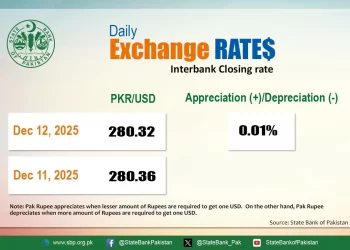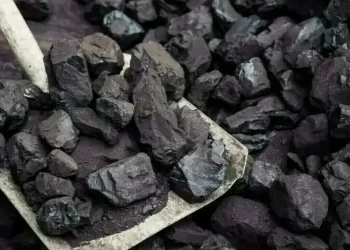SYDNEY: The Australian dollar climbed to a 16-1/2-year peak on the low-yielding yen on Thursday, bolstered by expectations policy will remain tight at home, while the kiwi found the uptick in economic growth underwhelming.
Markets continued to pare back the probability of a rate cut from the Reserve Bank of Australia this year, following a hawkish-sounding policy presentation on Tuesday.
An easing in December is now seen at just a 25% probability, from 64% at the start of the week.
The prospect of a long period of steady policy until early next year and low volatility in rates is attractive for carry trades, mainly borrowing in yen at low rates to buy Aussie.
Those flows lifted the Aussie to 105.54 yen on Thursday, the highest since November 2007, and broke a major resistance level of 105.43, a peak from 2013.
It gained 1.1% in the past three days.
Against the greenback, the Aussie held firm at $0.6676, near the top of the recent range of $0.6580-0.6710.
There is now a small risk of a rate hike from the RBA in August at 15%, making the central bank an outlier at a time when policymakers in Europe and Canada have started cutting rates.
“Overall, the RBA appears to be setting up for a potential rate hike at their Aug-24 meeting,” said George Tharenou, chief economist at UBS, adding that the Q2 inflation report due on July 31 is now a crucial factor.
Australia, NZ dollars go flat
“A material upside surprise of over 1.0% q/q now seems a trigger for a hike, as it would not only indicate the prior slowing trend of inflation has ended, but would also show a re-acceleration of inflation.”
The kiwi dollar climbed briefly to $0.6148 after data showed New Zealand’s economy expanded 0.2% in the first quarter.
The gain, however, soon faded and it was left 0.1% lower at $0.6126 as the underlying growth remained weak.
That is one reason that markets are somewhat more dovish on the Reserve Bank of New Zealand (RBNZ), implying a 50% chance of a cut as early as October and better than 100% for November.
As a result, the Australian dollar climbed another 0.4% overnight on the kiwi to NZ$1.0874, the highest in a month.
SYDNEY: The Australian dollar climbed to a 16-1/2-year peak on the low-yielding yen on Thursday, bolstered by expectations policy will remain tight at home, while the kiwi found the uptick in economic growth underwhelming.
Markets continued to pare back the probability of a rate cut from the Reserve Bank of Australia this year, following a hawkish-sounding policy presentation on Tuesday.
An easing in December is now seen at just a 25% probability, from 64% at the start of the week.
The prospect of a long period of steady policy until early next year and low volatility in rates is attractive for carry trades, mainly borrowing in yen at low rates to buy Aussie.
Those flows lifted the Aussie to 105.54 yen on Thursday, the highest since November 2007, and broke a major resistance level of 105.43, a peak from 2013.
It gained 1.1% in the past three days.
Against the greenback, the Aussie held firm at $0.6676, near the top of the recent range of $0.6580-0.6710.
There is now a small risk of a rate hike from the RBA in August at 15%, making the central bank an outlier at a time when policymakers in Europe and Canada have started cutting rates.
“Overall, the RBA appears to be setting up for a potential rate hike at their Aug-24 meeting,” said George Tharenou, chief economist at UBS, adding that the Q2 inflation report due on July 31 is now a crucial factor.
Australia, NZ dollars go flat
“A material upside surprise of over 1.0% q/q now seems a trigger for a hike, as it would not only indicate the prior slowing trend of inflation has ended, but would also show a re-acceleration of inflation.”
The kiwi dollar climbed briefly to $0.6148 after data showed New Zealand’s economy expanded 0.2% in the first quarter.
The gain, however, soon faded and it was left 0.1% lower at $0.6126 as the underlying growth remained weak.
That is one reason that markets are somewhat more dovish on the Reserve Bank of New Zealand (RBNZ), implying a 50% chance of a cut as early as October and better than 100% for November.
As a result, the Australian dollar climbed another 0.4% overnight on the kiwi to NZ$1.0874, the highest in a month.









